ADHD Task Chunking Assistant
Break Your Task into ADHD-Friendly Chunks
Enter a task you're struggling to start or complete, and I'll help break it down into 5-10 minute chunks with strategies tailored for ADHD.
Your Chunked Task Plan
ADHD is a neurodevelopmental condition that affects attention, impulse control, and executive function. People with ADHD often experience difficulty initiating or completing tasks, which can look a lot like chronic procrastination. At the same time, Procrastination is the habit of postponing tasks despite knowing that postponement creates stress or negative outcomes. When ADHD and procrastination meet, the result is a double‑edged challenge that feels impossible to break.
Quick Takeaways
- ADHD alters the brain’s dopamine pathways, making instant reward more compelling than long‑term payoff.
- Strengthening executive function is the key to beating procrastination.
- Chunk tasks, use visual timers, and pair work with movement to stay on track.
- Medication, CBT, and mindfulness each address a different piece of the puzzle.
- Customize any strategy to fit your personal rhythm - there’s no one‑size‑fits‑all solution.
How ADHD Fuels Procrastination
Neuroscience shows that ADHD brains have lower baseline dopamine levels. Dopamine is the chemical that signals reward and motivation. When a task offers a delayed reward (like finishing a report), the brain’s dopamine response is weak, so the task feels bland. Immediate pleasures - scrolling social media, playing video games, or simply daydreaming - light up the dopamine system far more strongly. This wiring makes it natural to put off anything that doesn’t give an instant buzz.
Executive function - the mental toolbox that handles planning, prioritising, and self‑monitoring - is also compromised. ADHD procrastination isn’t laziness; it’s a neurological mismatch between what the brain wants now and what it needs later.
Core Executive‑Function Hurdles
- Working memory loss: Holding multiple steps in mind while starting a task feels overwhelming.
- Task initiation fatigue: The “starting line” feels like a hill you can’t climb.
- Time‑blindness: Minutes blend together, so deadlines slip by unnoticed.
- Impulse‑driven switching: The urge to jump to a more interesting activity is constant.
Because these hurdles are inter‑linked, a single fix rarely works. A layered approach that tackles each piece gives the best results.
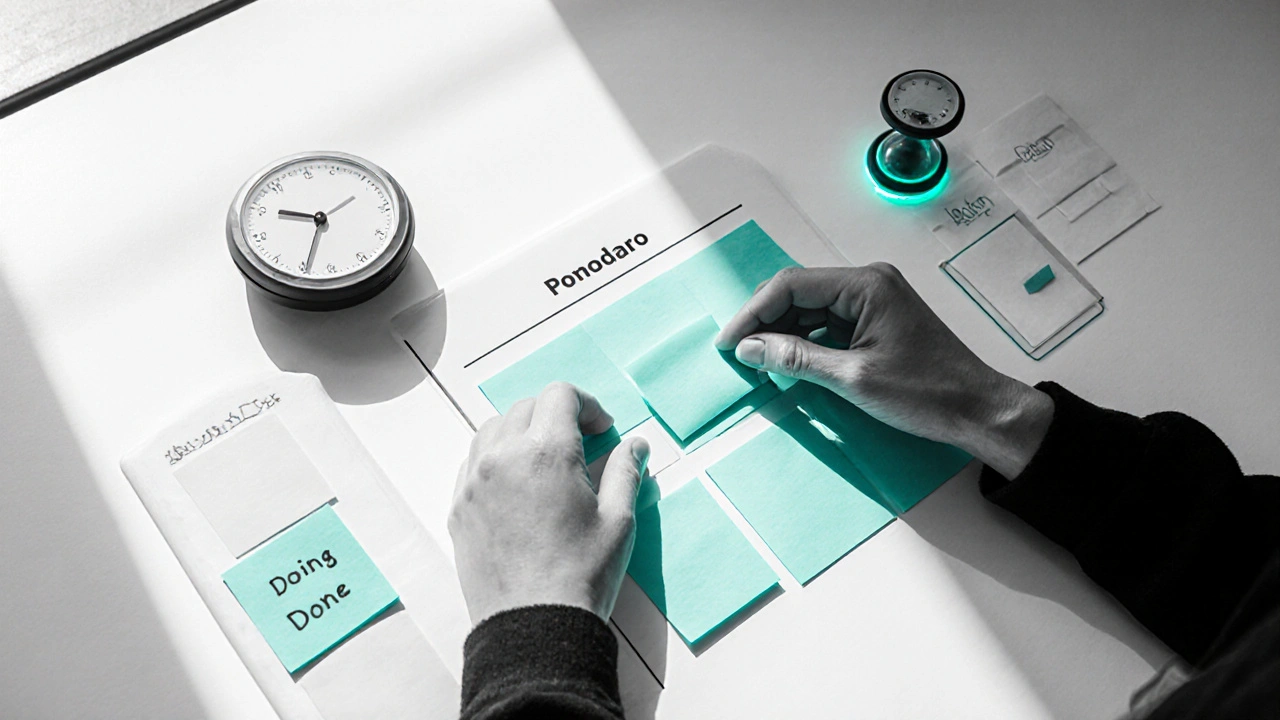
Proven Strategies to Break the Cycle
1. Time‑blocking & the Pomodoro Method
Set a timer for 25minutes (one Pomodoro) and commit to a single micro‑task. When the alarm rings, take a 5‑minute break - stand, stretch, or drink water. The short, bounded window reduces the dread of a long‑haul effort and creates a dopamine spike every quarter‑hour.
2. Task Chunking & the 2‑Minute Rule
Break larger projects into bite‑sized “chunks” that can be finished in 5‑10minutes. If a chunk seems too big, ask yourself: “Can I start this in two minutes?” Often, the act of starting is the hardest part; once you’re moving, momentum carries you forward.
3. External Cues and Visual Timers
Use a physical clock, sand timer, or colour‑coded board. Seeing time pass visually counters internal time‑blindness. Place the timer where you can’t ignore it - on the desk rather than the phone.
4. Mindfulness and Grounding Techniques
Quick mindfulness snaps (e.g., a 30‑second breathing count) reset the brain’s arousal level, lowering impulsive urges. Pair this with a brief “grounding” activity - naming five things you see, four you hear - before diving back into work.
5. Medication and Behavioural Therapy
Stimulant medication (like methylphenidate or amphetamines) boosts dopamine, making sustained focus more achievable. Cognitive‑Behavioural Therapy (CBT) teaches skills for planning, self‑talk, and reward structuring. The combination often yields the steepest improvement curve.
6. Digital Distraction Management
Turn off non‑essential notifications and use apps that lock distracting sites during work blocks. Keep the phone in another room or on “Do Not Disturb” mode. If you need quick info, set a 1‑minute timer before you open a browser tab.
Strategy Comparison: General Procrastination vs. ADHD‑Tailored Tweaks
| Typical Tactic | ADHD‑Focused Adjustment | Why It Works |
|---|---|---|
| Make a long to‑do list | Use a visual Kanban board with three columns: Ready, Doing, Done | Visual movement between columns provides immediate dopamine hits |
| Set a distant deadline | Add mini‑deadlines for each chunk, highlighted with colour codes | Creates frequent short‑term goals that align with ADHD’s reward system |
| Work in a silent environment | d>Play low‑volume background music or white noise that matches personal focus rhythm | Gentle stimulation keeps the brain engaged without overwhelming it |
| Rely on willpower alone | Pair each task with a tangible reward (e.g., a snack, a short walk) | External rewards supplement weak internal dopamine signals |
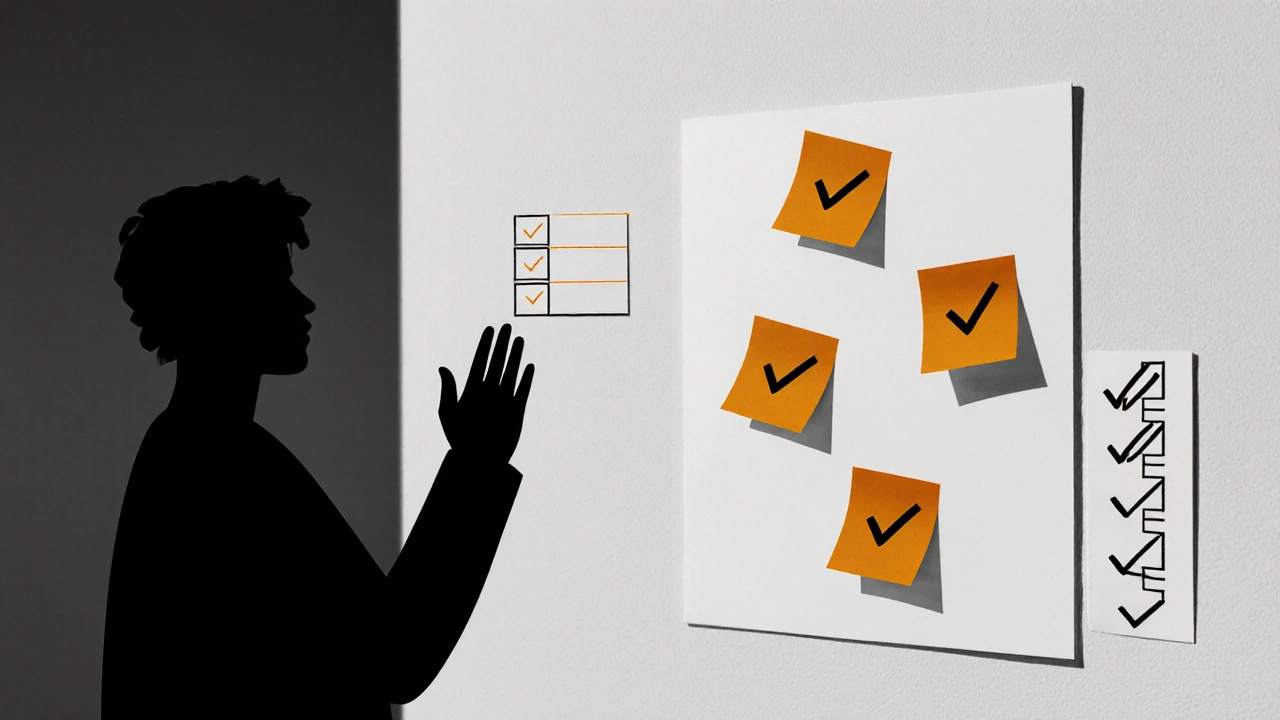
Putting It All Together: A Sample 3‑Day Action Plan
- Morning (Day1): Identify three top priorities. Write them on sticky notes and place them on a board.
- Set a Pomodoro timer for the first task (25min).
- After the session, reward yourself with a 5‑minute walk.
- Afternoon (Day2): Review the board. Move any unfinished sticky notes to the “Doing” column and break them into 5‑minute chunks.
- Use a sand timer to visualise the chunk.
- Practice a 30‑second breathing reset before each chunk.
- Evening (Day3): Conduct a quick 5‑minute “wins” review. Celebrate each moved note.
- Log what worked and what distracted you.
- Adjust the next day’s board based on the insights.
Repeating this loop for a couple of weeks rewires the habit loop: cue → action → reward → repeat. Over time, the brain learns that starting a task is itself rewarding.
Common Pitfalls and How to Dodge Them
- All‑or‑nothing thinking: If you miss a Pomodoro, don’t abandon the whole day. Shift to a 5‑minute micro‑task instead.
- Over‑loading the board: Too many sticky notes become visual clutter. Keep the board to 5‑7 items max.
- Skipping breaks: Burnout erodes dopamine. Use the break to move, stretch, or change environment.
- Ignoring medication timing: Take prescribed meds at consistent times to smooth dopamine spikes.
Frequently Asked Questions
Can procrastination be a sign of ADHD, or are they separate issues?
Procrastination is common for anyone, but when it repeatedly stems from difficulty initiating tasks, poor time‑perception, or impulsive switching, it often points to ADHD‑related executive‑function deficits. A professional assessment can clarify the relationship.
Do I need medication to beat procrastination?
Medication isn’t a magic fix, but it can level the dopamine playing field, making other strategies more effective. Many people succeed with a blend of medication, behavioral therapy, and habit‑building tools.
How long does it take to see results from the Pomodoro technique?
Most users notice a boost in focus after a few days of consistent use. The key is to keep the intervals short enough to stay motivated but long enough to make progress.
What if I’m easily distracted by my phone during work blocks?
Try a “phone jail” - place the device in another room or use an app that locks it for the duration of the timer. Pair the lock with a tangible reward after the block.
Is mindfulness really helpful for ADHD?
Short, focused mindfulness practices can lower hyper‑arousal and improve attention regulation. Even a 1‑minute breathing pause before a task can reduce impulsive urges.
Procrastination won’t disappear overnight, but with the right blend of brain‑friendly tactics, you can turn the habit into a manageable part of your day. Start small, celebrate each win, and keep tweaking the system until it feels natural.
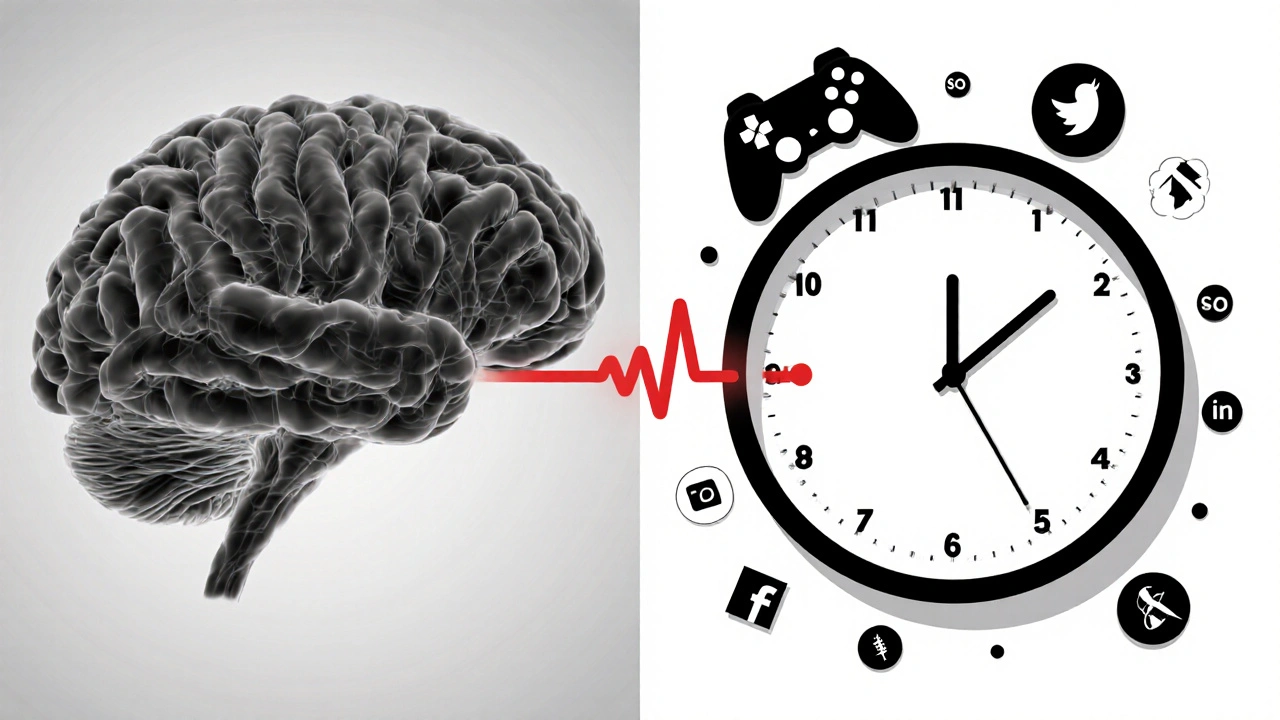

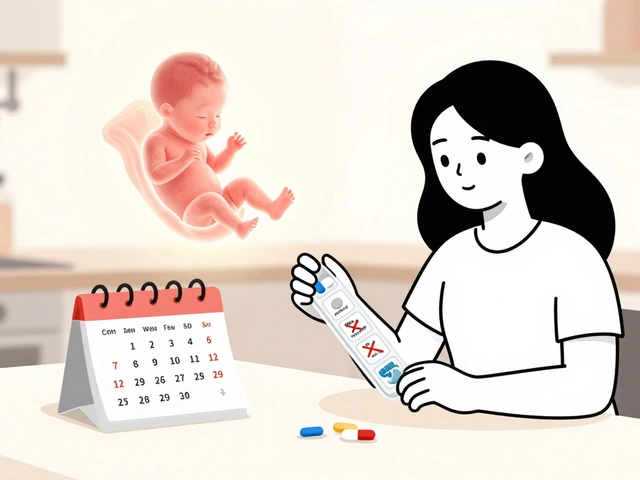
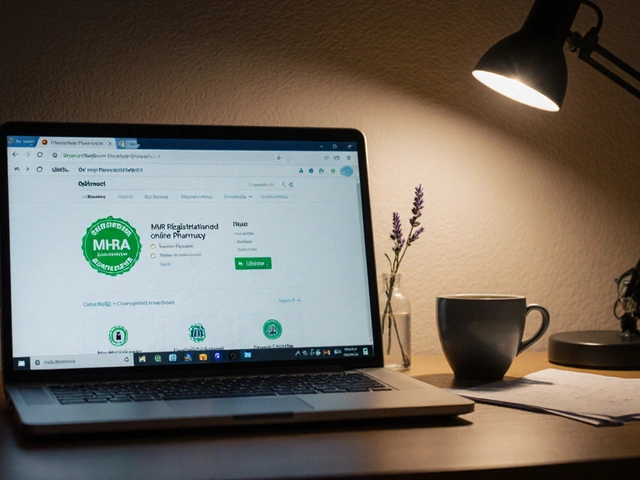
Emily Rankin
October 17, 2025 AT 14:20Imagine the mind as a restless river, always seeking the next ripple of excitement. When we channel that current into a focused stream, even the smallest task becomes a stepping stone toward a larger purpose. The strategies you mentioned are like bridges, turning fleeting motivation into lasting achievement. Keep riding those waves, and soon the habit of procrastination will feel like a distant shore.
Rebecca Mitchell
October 18, 2025 AT 12:33Honestly the pomodoro trick works better if you just start the timer and stop overthinking. No need to write a manifesto about it.
Roberta Makaravage
October 19, 2025 AT 12:10Let me be crystal clear: the neurochemical basis of ADHD is not a myth nor a convenient excuse; it is a well‑documented dopamine deficiency that reshapes the reward circuitry of the brain. 🧠 The instantaneous allure of scrolling feeds is not merely a habit but a physiological response to low baseline dopamine. You cannot simply will away this imbalance without addressing the root cause. The most effective interventions, therefore, fuse pharmacology with behavioral scaffolding, creating a synergistic feedback loop that amplifies motivation. 📈 When you pair medication with structured pomodoros, each 25‑minute sprint becomes a dopamine‑boosting event, reinforcing the neural pathways associated with task completion. Moreover, the concept of “task chunking” directly counters working‑memory overload by reducing cognitive load to manageable units. Imagine trying to juggle ten balls at once versus handling one ball at a time – the latter is vastly more achievable for an ADHD brain. Visual timers, such as sandglasses, act as external chronometers, compensating for the internal time‑blindness that plagues many individuals. This external cue provides a concrete reference point, aligning perception with reality. Mindfulness, often dismissed as “soft,” actually calibrates the autonomic nervous system, lowering impulsive triggers that lead to task‑switching. A 30‑second breath count isn’t gratuitous; it is a micro‑reset that stabilizes arousal levels. Cognitive‑behavioral therapy, on the other hand, equips you with self‑talk scripts that rewrite the internal narrative from “I can’t start” to “I will begin now.” It is this narrative shift that fuels the intrinsic reward mechanism, making the act of starting itself satisfying. 📚 Finally, digital distraction blockers serve as environmental firewalls, preventing the brain’s natural drift toward high‑stimulus activities. By creating a controlled digital ecosystem, you protect the hard‑won focus you cultivated during the work block. In sum, the intersection of dopamine‑enhancing medication, structured time‑blocking, and mindful grounding isn’t just a checklist; it is a comprehensive, science‑backed protocol for reclaiming agency over one’s own attention.
Katie Henry
October 20, 2025 AT 11:46Esteemed members, the implementation of visual cue systems should be executed with precision and decorum. By aligning each task with a distinct colour-coded timer, you engender immediate feedback that the brain readily assimilates. Such structured methodology not only mitigates impulsive diversions but also cultivates a disciplined work ethic. I encourage you to adopt these practices forthwith to optimise productivity.
Chris Beck
October 21, 2025 AT 11:23Sara Werb
October 22, 2025 AT 11:00Honestly, the "simple schedule" you brag about is part of the grand scheme to keep us docile!!! THEY DON'T WANT US TO QUESTION THE SYSTEM!!! By constantly nudging us toward endless productivity hacks, they mask the deeper surveillance embedded in our devices!!! Break free, use analog timers, and remember: every notification is a leash!!!
CHIRAG AGARWAL
October 23, 2025 AT 10:36Fine, I tried a pomodoro once, fell asleep, and missed the deadline. Maybe it works for some, maybe not, who cares?
genevieve gaudet
October 24, 2025 AT 10:13Bro, I get it-when we break tasks into bite sized pieces, it's like serving tapas instead of a huge banquet. That approach definitely helps my brain stay focused, especially when I'm juggling different cultures and perspectives. It's also a good reminder that productivity looks different for everyone, so we should definitely experiment and find what fits our own rhythm.
Kevin Adams
October 25, 2025 AT 09:50Use timers.
Joanna Mensch
October 26, 2025 AT 09:26Timers are just another way for the system to monitor our every move. The subtle pressure they apply keeps us in a state of constant vigilance, which is exactly what they want. By accepting them, we surrender another piece of our autonomy. If we truly want freedom, we must question even the most innocuous tools.
RJ Samuel
October 27, 2025 AT 09:03Honestly, I think the whole “break tasks into chunks” thing is overrated. People love to sound productive, but sometimes the best thing is to just dive in headfirst. If you’re constantly micro‑managing, you’re missing the bigger picture. I’d rather challenge the norm and see where the chaos takes me.
Nickolas Mark Ewald
October 28, 2025 AT 08:40That’s a good point, RJ. I’ve found that a simple visual board can actually help without feeling restrictive. It gives a clear sense of progress, and teammates can see what’s up. Let’s try it in our next sprint and see how it goes.
Tom Green
October 29, 2025 AT 08:16Hey folks, if you’re feeling stuck, consider pairing a short timer with a tangible reward-like a quick walk or a snack. This creates a mini‑celebration after each block, reinforcing the habit loop. Remember, consistency beats intensity every time.
Lauren Sproule
October 30, 2025 AT 07:53That sounds great, Tom! I think adding a quick win board could help everyone see their progress and stay motivated. Let's give it a try and share what works best for each of us.